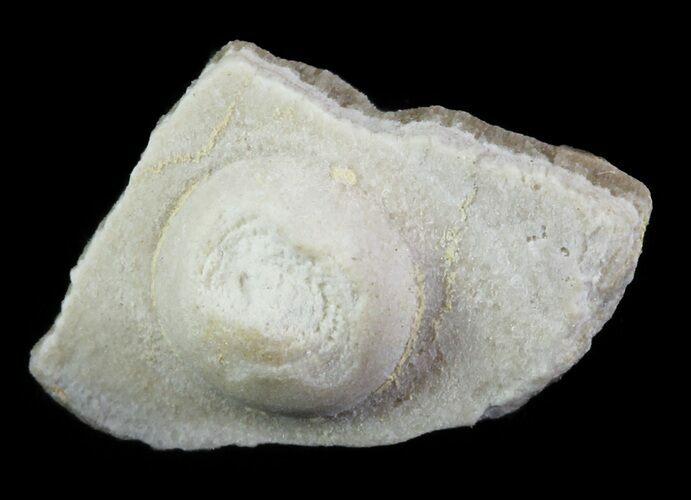This Specimen has been sold.
Fossil Pearl - Smoky Hill Chalk, Kansas
This is a fossil pearl attached to a fragment of inoceramid shell from the Smoky Hill Chalk of Gove County, Kansas.The pearl is 0.17" wide. Pearls do not often preserve as they are composted of Aragonite which is not as stable as the calcite of the oyster shell.
The Smoky Hill Chalk Member of the Niobrara Chalk formation is a Cretaceous conservation Lagerstätte, or fossil rich geological formation, known primarily for its exceptionally well-preserved marine reptiles. It outcrops in parts of northwest Kansas, its most famous localities for fossils, and in southeastern Nebraska. Large well-known fossils excavated from the Smoky Hill Chalk include marine reptiles such as plesiosaurs, large bony fish such as Xiphactinus, mosasaurs, flying reptiles or pterosaurs (namely Pteranodon), flightless marine birds such as Hesperornis, and turtles. Many of the most well-known specimens of the marine reptiles were collected by dinosaur hunter Charles H. Sternberg and his son George.
The Smoky Hill Chalk Member of the Niobrara Chalk formation is a Cretaceous conservation Lagerstätte, or fossil rich geological formation, known primarily for its exceptionally well-preserved marine reptiles. It outcrops in parts of northwest Kansas, its most famous localities for fossils, and in southeastern Nebraska. Large well-known fossils excavated from the Smoky Hill Chalk include marine reptiles such as plesiosaurs, large bony fish such as Xiphactinus, mosasaurs, flying reptiles or pterosaurs (namely Pteranodon), flightless marine birds such as Hesperornis, and turtles. Many of the most well-known specimens of the marine reptiles were collected by dinosaur hunter Charles H. Sternberg and his son George.
SPECIES
N/A
LOCATION
Gove County, Kansas
FORMATION
Niobrara Formation
SIZE
Pearl 0.17"
CATEGORY
SUB CATEGORY
ITEM
#64154
We guarantee the authenticity of all of our specimens.
 Reviews
Reviews












